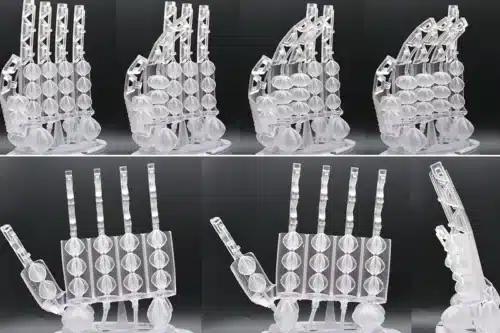Researchers at the Italian Institute of Technology have developed 3D-printed artificial muscles that convert energy and signals into movement and lift 8 kilograms while maintaining human-like hand movements

Corrado De Pascali and his colleagues at the Italian Institute of Technology have developed 3D-printed artificial muscles, created from actuators that convert energy into movement by inflating the artificial muscles. “We started from the traditional artificial muscle and developed a new class of artificial muscles made of a single monolithic component,” says De Pascali.
According to research these tiny actuators that operate as artificial muscles could lift to 1000 times their weight and this may lead to robots with human-like grips. The actuator membranes are called GeometRy-based Actuators that Contract and Elongate (GRACE) and are 3D printed from flexible resin that enables them to stretch and contract like human muscles. The researchers designed this membrane using a mathematical model. Some actuators could lift relatively heavy items depending on the material used to make the actuator and the material’s thickness. When put to the test, one 8-gram actuator lifted 8 kilograms.
The difference between previous generations’ artificial muscles and GRACE actuators is that they consist of pleats in their membrane that can easily fold and unfold providing artificial muscles strength and flexibility. The researchers linked 18 different-sized actuators to make a robotic hand with a wrist. The hand could bend its fingers, twist its palm and rotate at the wrist by applying pressure to the different actuator membranes.
“The design of the GRACE is interesting and novel, providing easy antagonistic operation by design,” says Jonathan Aitken at the University of Sheffield, UK. He believes that one of the most innovative elements is the choice of flexible resin for the actuator, which gives a greater range of movement than the stiffer resins used up until now. Nevertheless, Aitken says this flexible resin could be developed even further. “The more novel resins that can be developed with excellent tensile properties will increase the range of capabilities of devices printed using them,” he says.
Click here for a detailed video.







